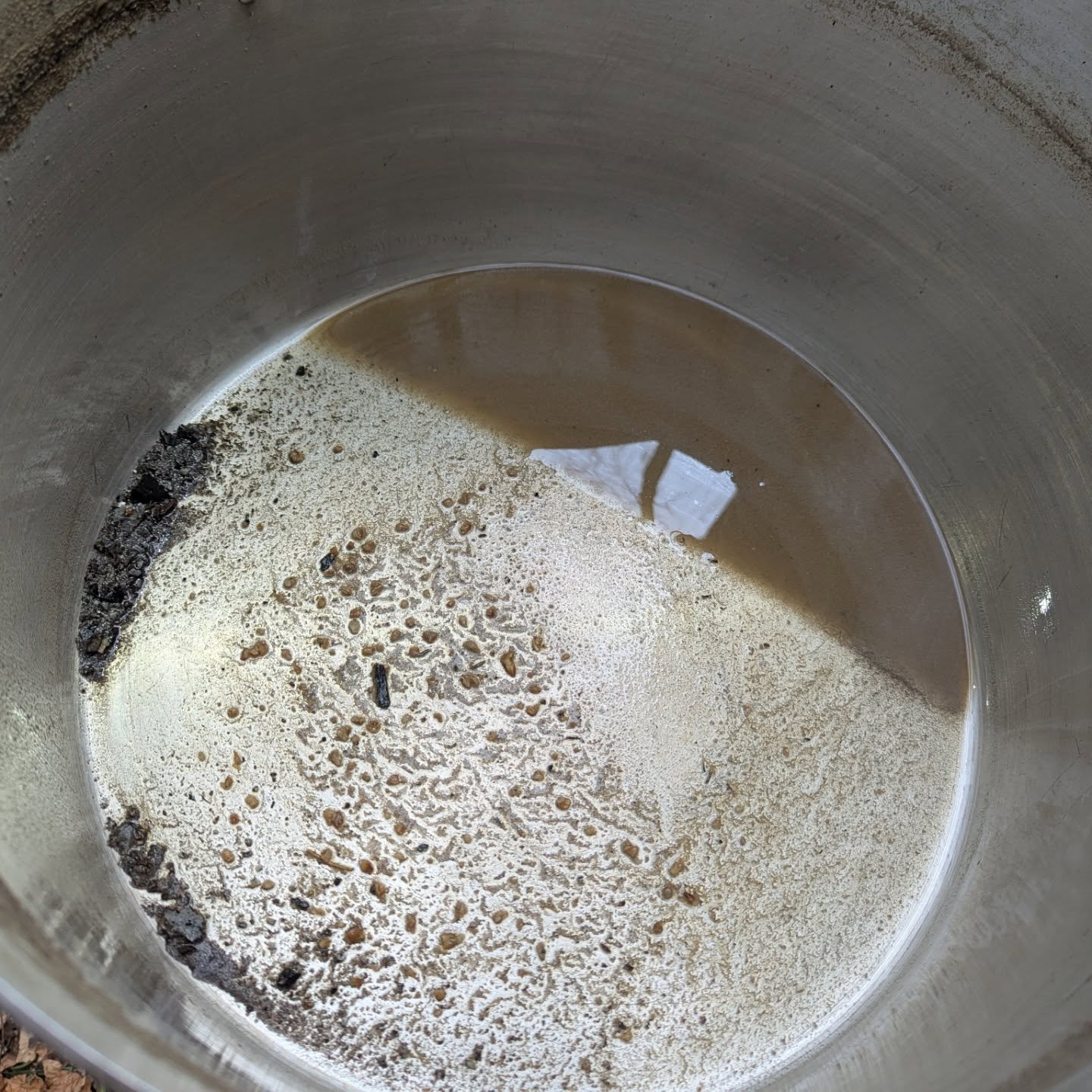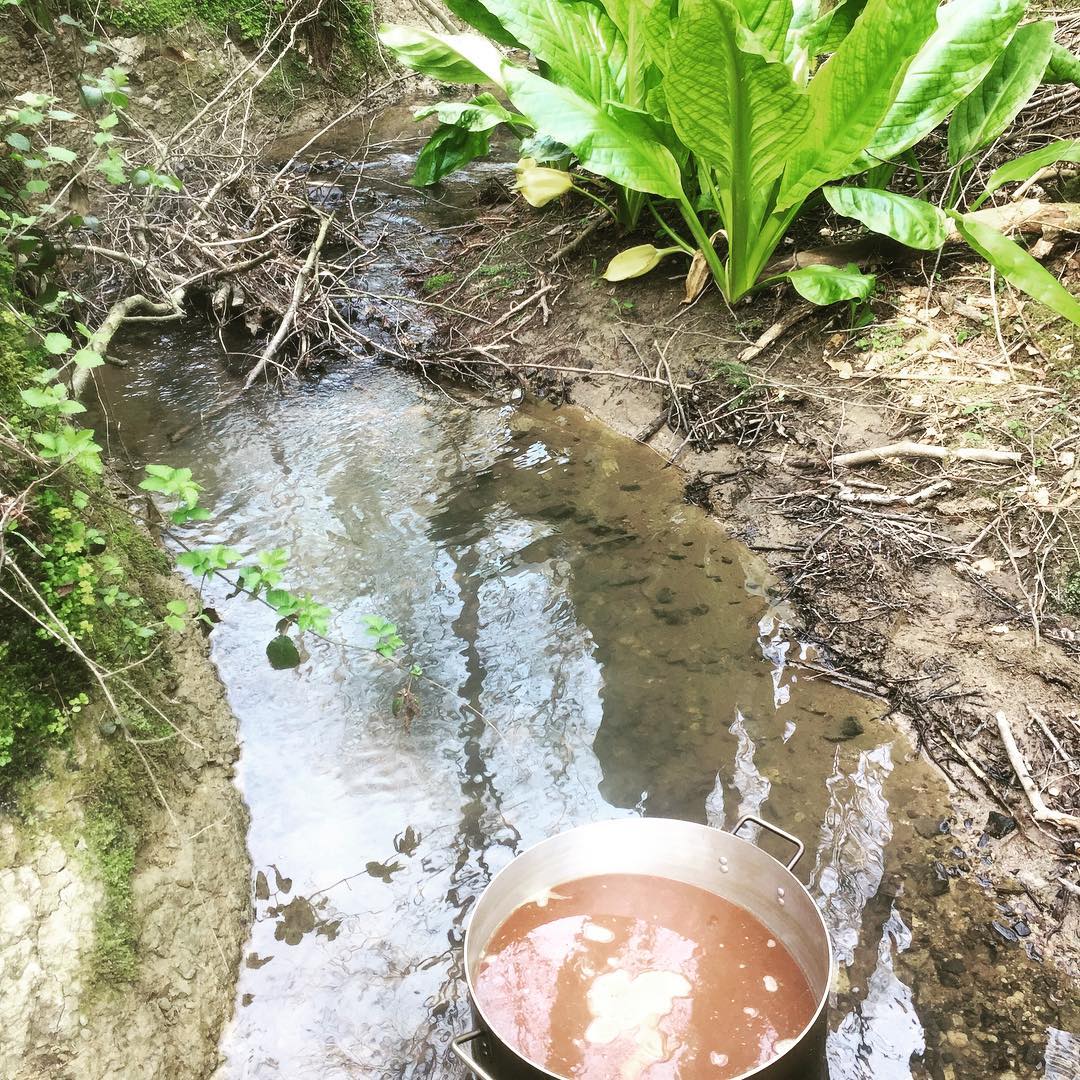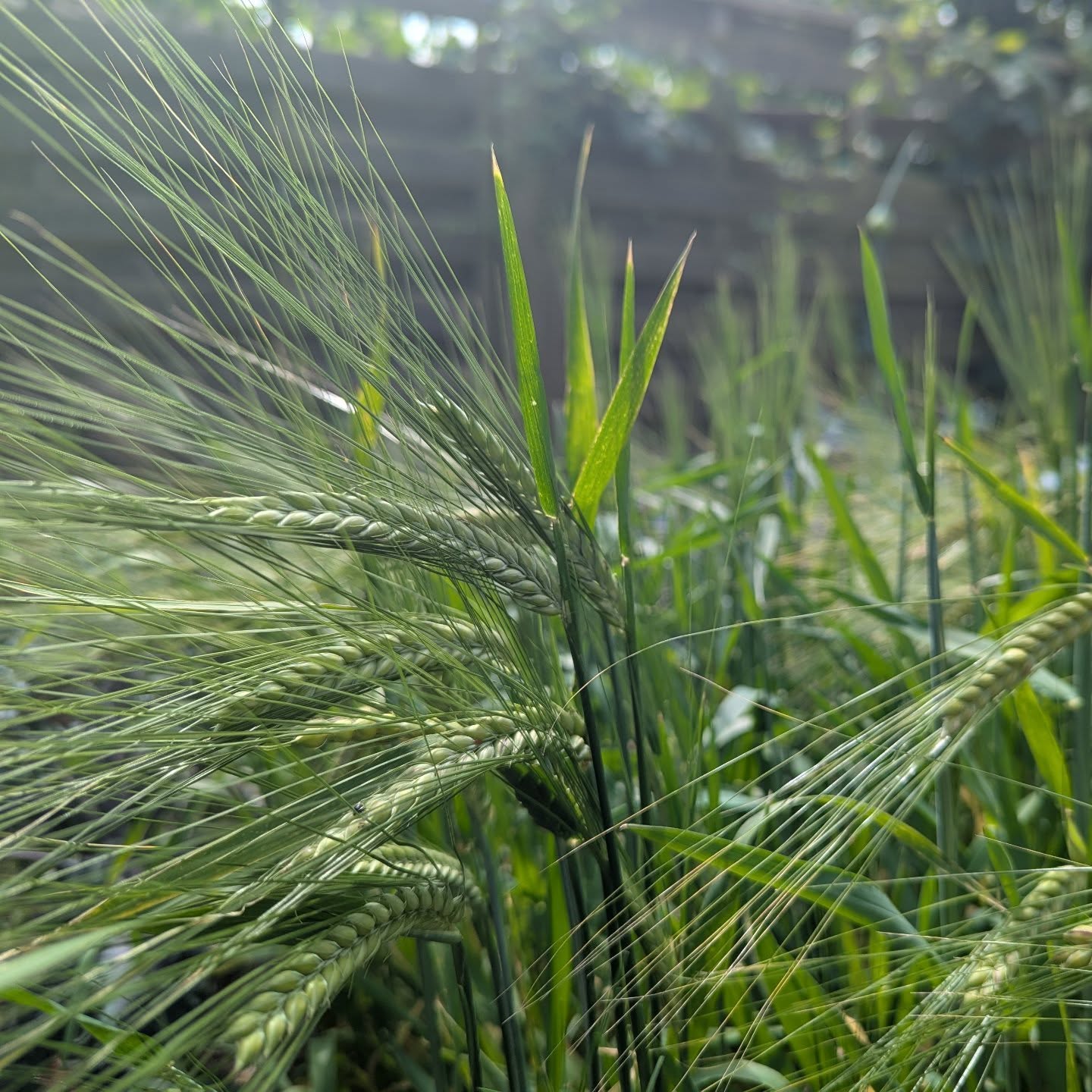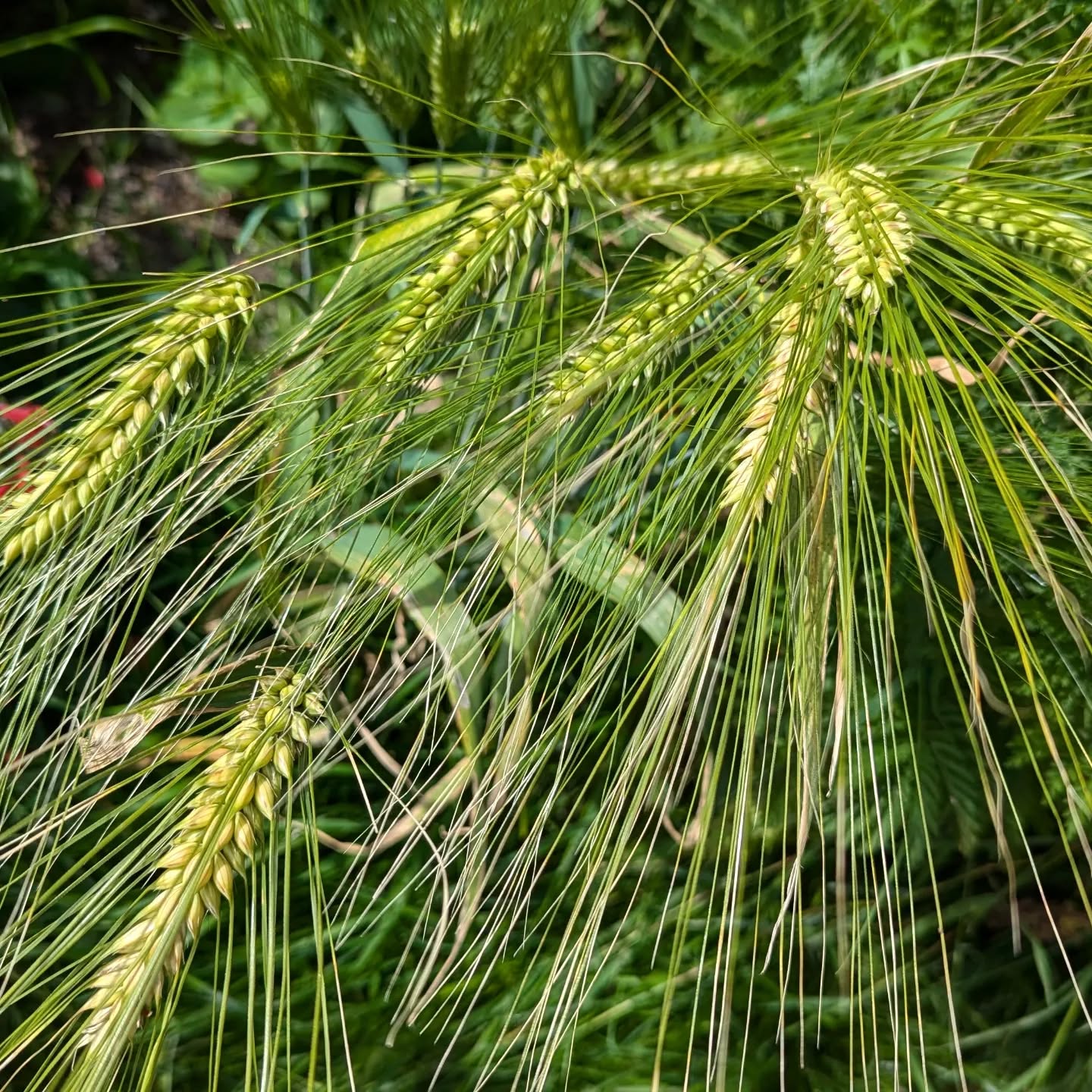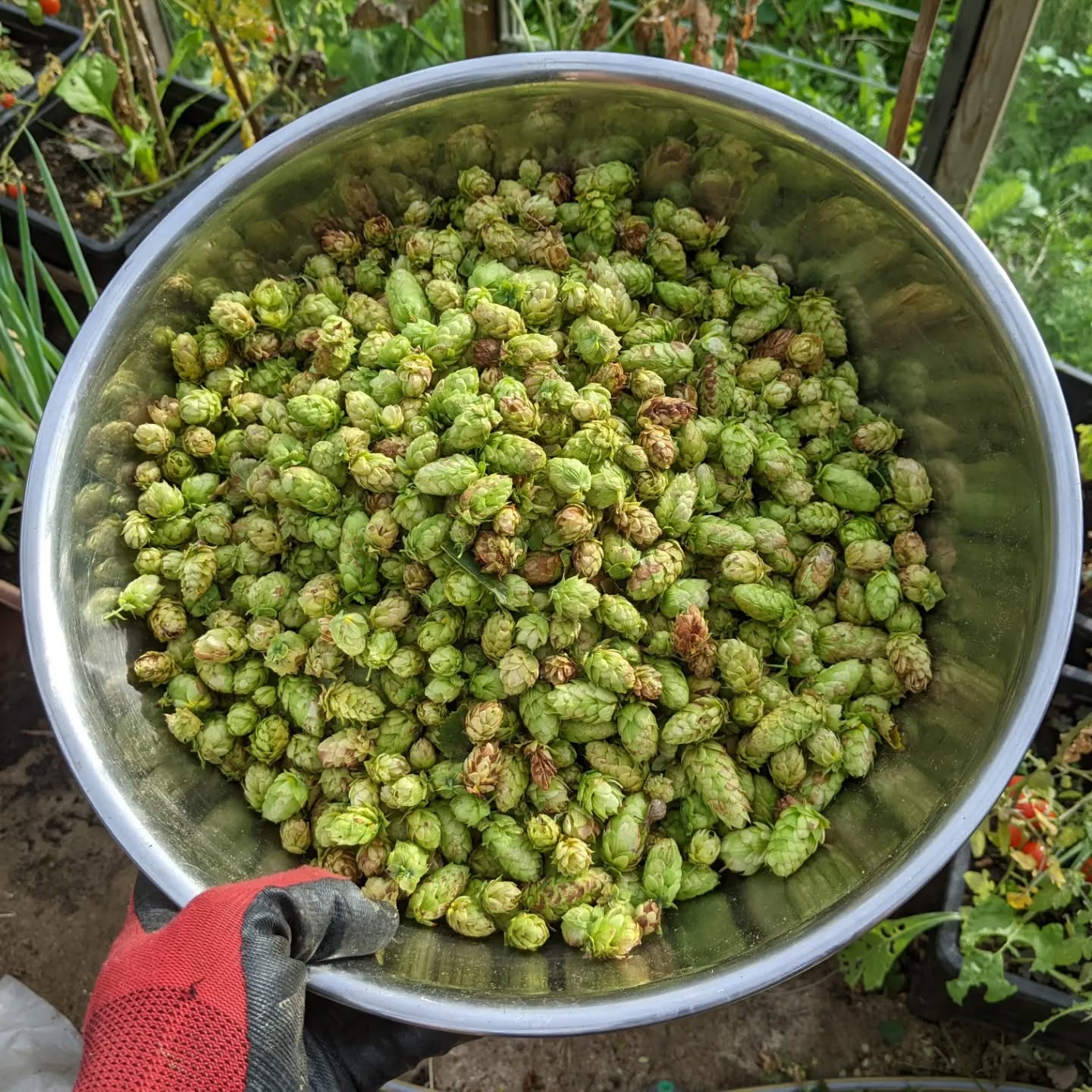· James Torr · Personal · 3 min read
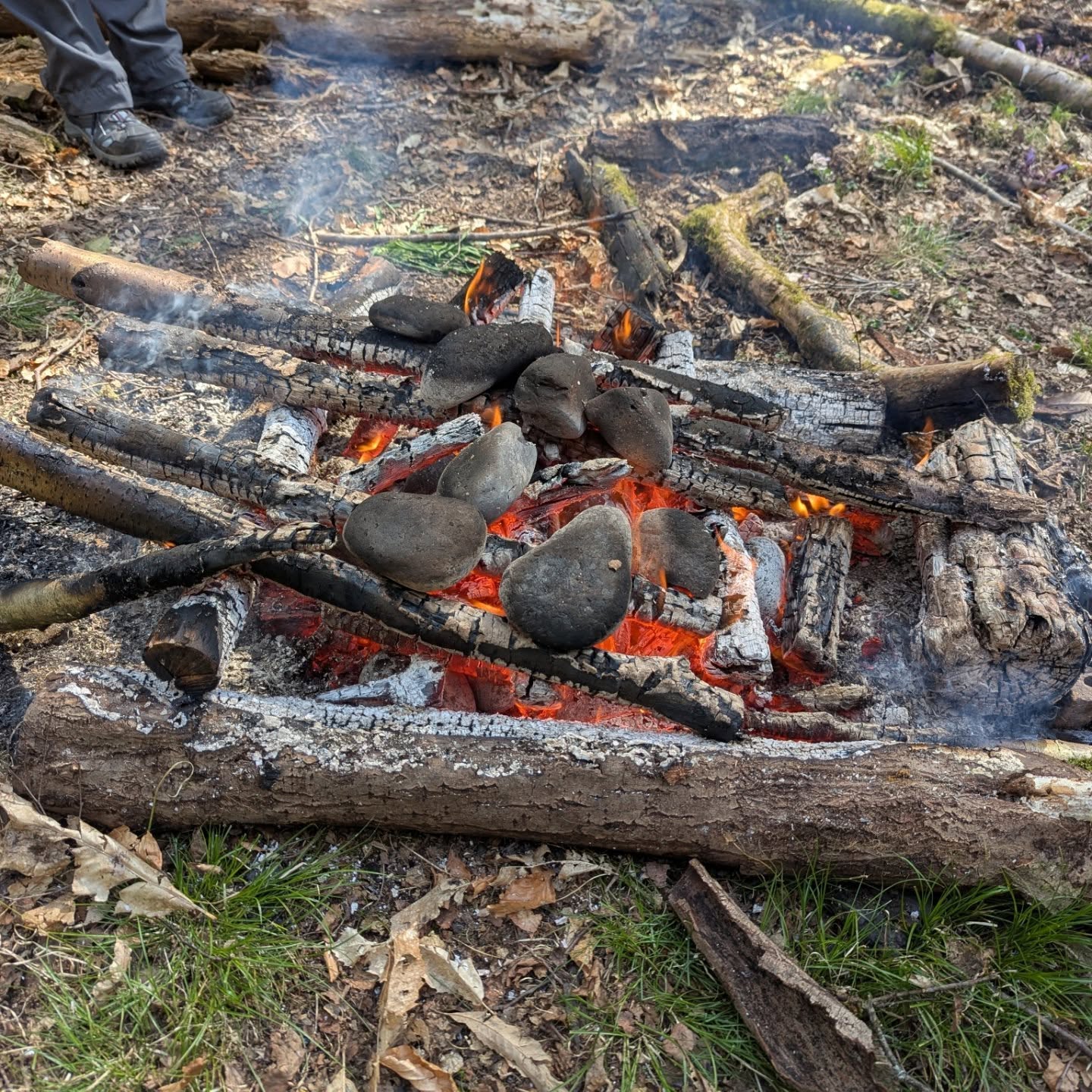
A lovely day out in the woods yesterday making a beer heated entirely with stones.
A lovely day out in the woods yesterday making a beer heated entirely with stones. This is I think the fifth time we’ve brewed in the woods. The first 3 or so times we were direct heating over the flames, only last time my friend suggested we try the old method of using stones. They work like a dream, no nasty soot or smoke to worry about, pretty good temp control. We didn’t get up to a rolling boil, but got pretty close to it. The hot ones get up to about 700C, so you have to be very careful with them. We use a fence post digger to add them to the wort.
I believe the method was used for wooden brewing vessels, much cheaper to make them before the industrial revolution, virtually nobody would have steel or copper boilers. There are Scandi records of this, though I’m not sure whether it was done in the UK.
For the brewers out there, this was a pale beer, with some toasted malts, mash hopped with a little Styrian, and whirlpooled with some Citra and NZ blend. More modern hops than we’re used to up in the woods! About 8 rocks brought 20 litres up to 78C, we removed them and placed a mash bag into the pot, achieving a mash temp of 67C. Moved the mash close to the fire and left it to convert for an hour. It slowly dropped while we had lunch. We brought up five litres of water to about 80C and sparged the grains in my Braumeister malt pipe. We pulled off two litres to aggressively boil for a bit of Maillard complexity, which was added back to the main wort batch. OG hit at around 1.064, 25 litres in, 18 litres wort, 5.5kg of grain. More rocks were added to bring the main wort up to a sort of boil 95C, where we sat it for about half an hour. Finally, we pulled the rocks out, and added the whirlpool steep hops, as well as some Western Hemlock (a type of spruce) to the wort, infused for half an hour, and cooled in the stream that runs through the site. Voss kveik yeast was pitched at 40C, and despite it being long-expired, was up and fermenting in an hour or two.
Thanks to the hosts and company for a lovely day out. I can recommend a project like this if you have access to a nice outdoor space or picnic area. It’s a fun day out, if slightly logistically challenging!
